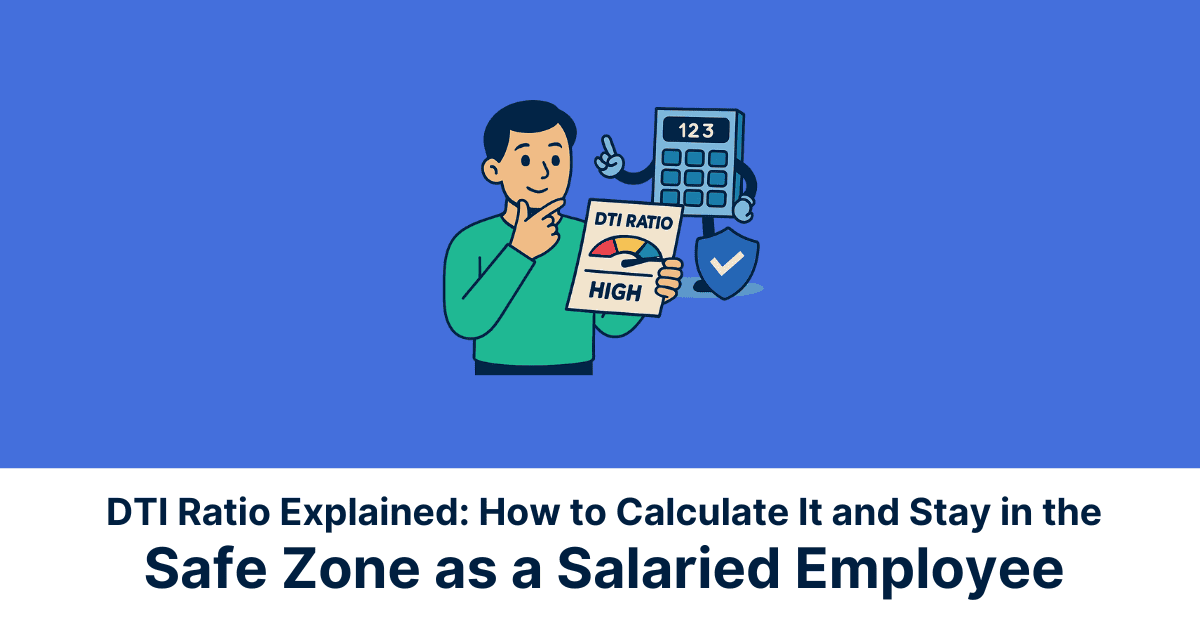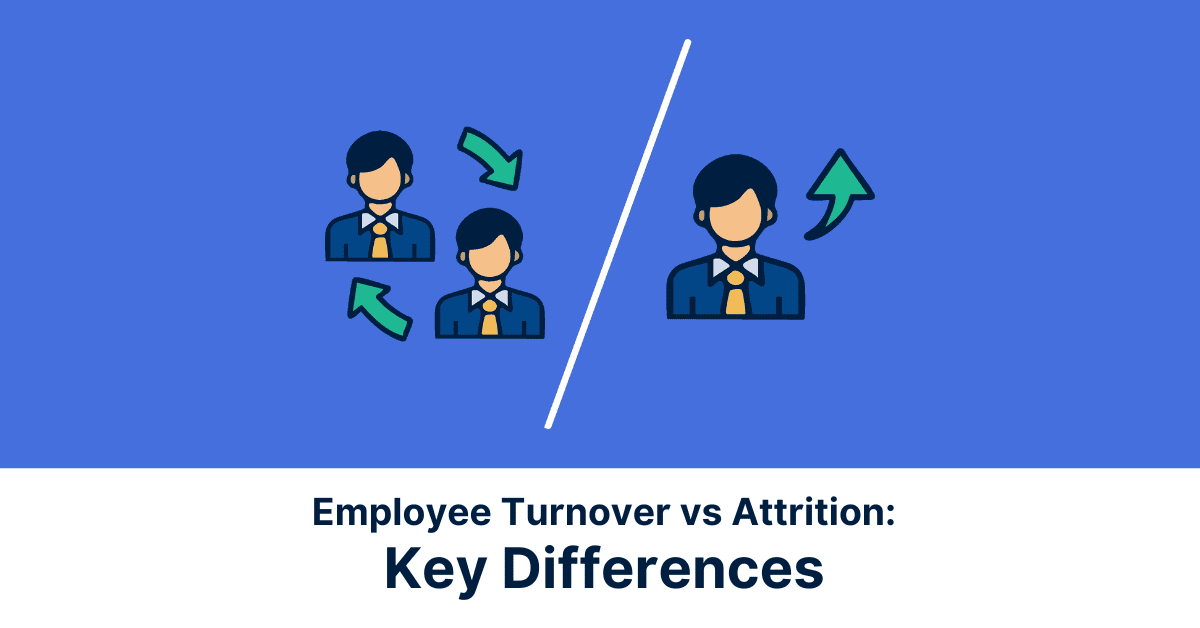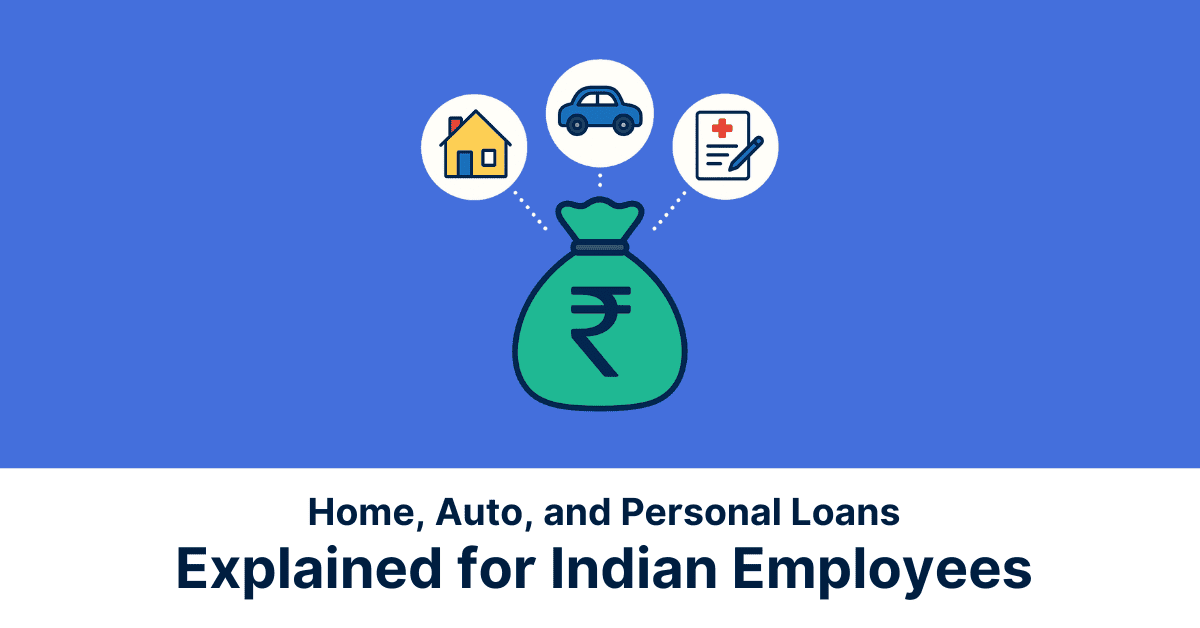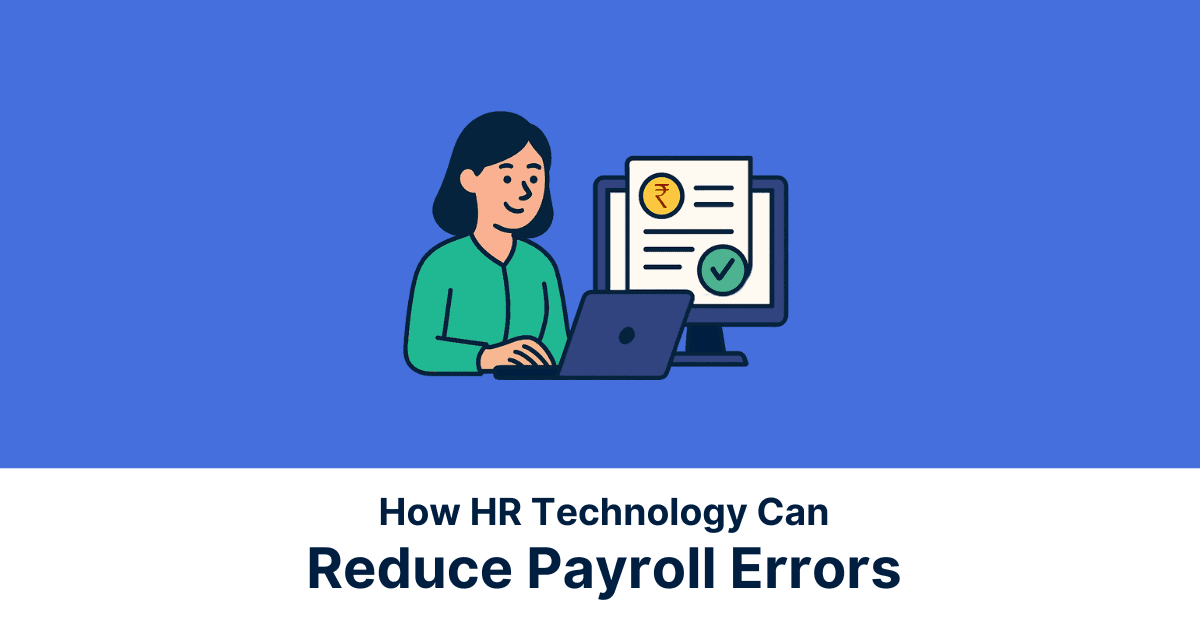If you’ve ever applied for a loan or credit card, you may have heard the term Debt-to-Income (DTI) Ratio. What is debt to income ratio, and why does it matter, especially for salaried individuals? In other words, your DTI ratio compares your monthly debt payments to your monthly gross income.
Lenders use this metric to measure your ability to manage monthly payments and repay borrowed money. For salaried employees, understanding and maintaining a healthy DTI ratio is vital for financial stability and future credit opportunities. Here, we will break down the debt to income ratio formula, explain how to calculate debt to income ratio, and help you with tips to stay in the safe zone.
What is Debt-to-Income (DTI) Ratio?
Your debt-to-income (DTI) ratio shows how much of your income goes towards repaying loans compared to what you earn. It’s a key measure lenders use to assess your ability to repay borrowed money.
When applying for housing finance or any major loan, you’ll need to meet the lender’s maximum DTI ratio limits. This ensures you’re not taking on more debt than you can reasonably manage. Generally, lenders favour applicants with a low DTI, as they pose a lower risk of default.
So, what counts as debt expenses? These include credit card bills, personal and auto loans, home loans, student loans, taxes, and insurance premiums.
Types of DTI Ratios
When evaluating your financial standing, lenders typically look at two types of Debt-to-Income (DTI) ratios:
Front-end DTI
The front-end DTI ratio looks specifically at your monthly housing-related expenses. This includes your home loan EMI, property taxes (if applicable), and home insurance. It does not include other forms of debt like personal loans or credit card dues. While Indian banks and housing finance companies usually don’t focus heavily on front-end DTI alone, it’s still a useful tool for salaried individuals to gauge how much of their income is tied up in housing costs. Government schemes or low-income housing loans may consider this ratio to assess affordability.
Back-end DTI
Back-end DTI is the more commonly used ratio in India’s lending space. It includes your home loan EMI along with all other monthly debt obligations, such as personal loan EMIs, vehicle loan EMIs, education loans, credit card dues, and any other fixed monthly repayments. This gives lenders a full picture of your debt load and your ability to repay new loans. Most Indian banks prefer a back-end DTI ratio under 40%–50% for salaried borrowers, depending on income level, job stability, and other financial factors.
How to Calculate Your DTI Ratio
It’s important not to confuse DTI with the debt-to-limit ratio, which relates to credit usage, not income. DTI is just one factor in a broader credit analysis, which evaluates overall creditworthiness and the likelihood of loan repayment.
The formula to calculate your Debt-to-Income (DTI) ratio is:
DTI = (Total Monthly Debt Payments ÷ Gross Monthly Income) × 100
The DTI percentage shows what portion of your income goes toward repaying debts each month. To use this formula, add up all your monthly debt obligations – such as EMIs, credit card payments, and insurance premiums. Then divide that total by your gross (pre-tax) monthly income and multiply by 100. A lower DTI indicates better financial health and a higher chance of loan approval. Lenders in India typically prefer a DTI below 40% for salaried individuals applying for personal or home loans.
Debt-to-Income Ratio Sample Calculation
Calculating your Debt-to-Income (DTI) ratio is simple and gives you clear insight into your financial health. Here’s a step-by-step guide:
Step 1: List All Your Monthly Debt Obligations
This includes:
- Credit card EMIs or minimum payments
- Personal loan EMIs
- Auto loan EMIs
- Home loan EMIs or rent (if relevant)
- Insurance premiums
- Property taxes (if paid monthly)
- Any other fixed monthly repayments
Step 2: Add Them Up
For example, suppose your monthly debts are:
- Credit card: ₹5,000
- Insurance premium: ₹5,000
- Property tax (monthly portion): ₹10,000
- Auto loan EMI: ₹5,000
Total monthly debt = ₹25,000
Step 3: Determine Your Gross Monthly Income
Let’s say your gross monthly income (before tax) is ₹1,00,000.
Step 4: Apply the DTI Formula
DTI Ratio = (Total Monthly Debt ÷ Gross Monthly Income) × 100
So in this case:
(₹25,000 ÷ ₹1,00,000) × 100 = 25%
A 25% DTI is considered good and reflects that you have manageable debt levels.
What is a Good DTI Ratio?
A good Debt-to-Income (DTI) ratio is typically 36% or lower, which indicates that you have a healthy balance between debt and income. This range is considered ideal by most Indian lenders, especially for salaried individuals applying for home or personal loans. It signals that you’re likely capable of managing additional debt without financial strain.
DTI ratios between 37% and 43% may still be acceptable, but they might raise concerns depending on your credit history, job stability, and income level. Ratios above 43% are often considered high-risk and could lead to loan rejections or higher interest rates.
DTI Ratio Benchmarks
DTI Ratio Benchmarks help lenders assess a borrower’s financial health and ability to take on new debt. Here’s a general breakdown of the ranges:
- Excellent (0%–20%): You have minimal debt compared to your income. This range gives you the strongest chance of loan approval with favorable terms.
- Good (21%–36%): Considered safe by most lenders. You’re managing debt well, and you’re likely to qualify for most loans.
- Fair (37%–43%): You’re bordering on risky. While loans may still be approved, lenders might offer higher interest rates or ask for stronger credit backing.
- High Risk (Above 43%): Many lenders see this range as risky. It indicates that a significant portion of your income goes toward debt, reducing your capacity to repay new loans.
Why DTI Ratio Matters for Salaried Individuals
For salaried individuals, the Debt-to-Income (DTI) ratio plays an important role in financial stability and creditworthiness. It directly impacts loan eligibility, as lenders use it to determine whether you can afford to take on new debt. A lower DTI suggests better debt management and increases your chances of loan approval. Conversely, a high DTI raises red flags, making you a riskier borrower, which can lead to higher interest rates or outright rejection.
Beyond loans, your DTI ratio is a valuable tool for financial planning. It helps you evaluate how much of your income goes toward debt and whether you’re overextending yourself. When you maintain a healthy DTI, you can avoid financial stress, improve credit-worthiness, and work toward long-term financial goals like homeownership or investments. For salaried earners, monitoring and managing DTI is key to sustaining both credit access and overall financial well-being.
Impact on Loan Approvals
Lenders closely examine Debt-to-Income (DTI) ratio as it is a direct reflection of how much of your monthly income is already committed to debt repayments. A lower DTI signals strong financial discipline and suggests that you have enough income left after paying existing debts to handle a new loan, making you a low-risk borrower.
Most banks and NBFCs in India prefer a DTI of 36% or below for salaried individuals. If your DTI falls between 37% and 43%, you may still qualify but could face tighter scrutiny, higher interest rates, or need to provide additional documentation.
A DTI above 43% is often considered high-risk, and your application might be rejected unless you have other strong compensating factors like a high income, stable employment, or excellent credit score. In short, lenders use the DTI as a key factor in the overall credit analysis process.
Financial Stability Indicator
The Debt-to-Income (DTI) ratio is a strong indicator of an individual’s financial stability. It reveals how much of your monthly income goes toward repaying debts, offering a snapshot of how well you’re managing your financial obligations. A low DTI ratio (typically below 36%) means you have sufficient income to cover your existing debts, indicating strong financial discipline and room to handle unexpected expenses or future financial goals.
On the other hand, a high DTI ratio suggests that a significant portion of your income is already tied up in debt, which can signal financial stress and limited capacity to take on more liabilities. For salaried individuals, maintaining a healthy DTI is crucial, not just for loan eligibility, but also for long-term financial planning. It helps in budgeting, managing spending, and ensuring you’re not living beyond your means, which ultimately contributes to overall financial well-being and peace of mind.
Tips to Maintain a Healthy DTI
Let’s look at certain tips to help maintain a healthy Debt-to-Income (DTI) ratio:
- Track your monthly expenses and income
- Prioritise paying off high-interest debts like credit cards
- Avoid taking on new loans unless absolutely necessary
- Create a realistic budget that limits unnecessary spending
- Save consistently
- Explore opportunities to increase your income (e.g., side gigs, freelance work)
- Consider consolidating or refinancing loans to reduce Equated Monthly Installments (EMIs)
- Always make payments on time
- Aim to keep your DTI below 36% for better loan eligibility and financial stability
Reducing Debt Obligations
To effectively reduce your debt obligations and improve your DTI ratio, consider these strategies:
- Debt Consolidation: Combine multiple high-interest loans or credit card balances into a single loan with a lower interest rate. This simplifies repayments and reduces the overall interest burden.
- Prioritise High-Interest Debts: Focus on paying off debts with the highest interest rates first (like credit cards) while making minimum payments on others. This reduces the total interest paid over time.
- EMI Restructuring or Refinancing: Approach your lender to renegotiate terms or refinance existing loans for lower EMIs.
- Avoid New Debt: Resist the urge to take on new credit unless absolutely necessary.
- Increase Monthly Payments: If your income allows, pay more than the minimum due each month to bring down your principal faster.
Increasing Income Streams
Boosting your income is a smart way to improve your DTI ratio and gain better financial flexibility. Here are a few practical strategies:
- Take Up Side Gigs: Freelancing, part-time consulting, or offering services like tutoring, design, or writing can supplement your salary.
- Monetise Hobbies: Turn passions like baking, photography, or crafting into income-generating activities.
- Invest in Skill Development: Enroll in online courses or certifications to enhance your expertise and open doors to higher-paying roles or promotions.
- Explore Passive Income: Look into investments that yield returns, like mutual funds, dividend-paying stocks, or rental income (if viable).
- Leverage the Gig Economy: Platforms for freelance gigs, or even ride-sharing apps can help you earn extra in your spare time.
Regular Financial Reviews
Regular financial reviews are needed for maintaining a healthy debt-to-income (DTI) ratio and overall financial well-being. By periodically assessing your income, expenses, and debt obligations, you can stay on top of your financial commitments and adjust your strategy as needed.
Salaried individuals should make it a habit to review their finances monthly or quarterly to track changes in income or spending patterns, identify unnecessary expenses, and ensure debt repayments are on schedule.
These reviews also help in early identification of potential financial red flags, such as rising debt or shrinking savings. They allow you to make informed decisions; whether it’s refinancing a loan or setting aside more for emergencies.
Staying financially aware reduces stress and improves your ability to plan for long-term goals like homeownership, education, or retirement. Think of financial reviews as a regular health check-up, but for your finances.
To Sum Up
It’s important to consider your debt-to-income ratio, but make sure you also understand some of the nuances. DTI calculations are based on gross monthly income, which doesn’t reflect the impact of taxes and other withholdings. Therefore, relying solely on DTI without considering your net income can lead to an inaccurate assessment of your spending ability and overall financial stability.
For effective budgeting and debt management, it’s advisable to use your net income, even though lenders may focus on your gross income when evaluating creditworthiness.
Take control of your financial future with Jify’s expert guidance. Access personalised financial advice and tools to achieve greater financial freedom and security.
Disclaimer: The information provided in this article is generic and for informational purposes only. It is not a substitute for specific advice in your circumstances. Hence, you are advised to consult your financial advisor before making any financial decision.



















